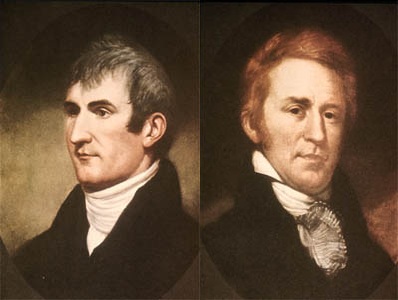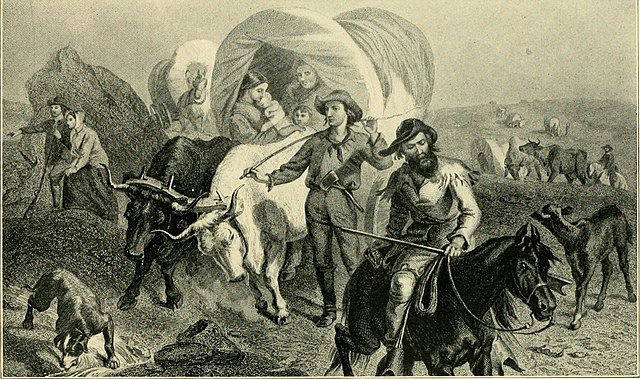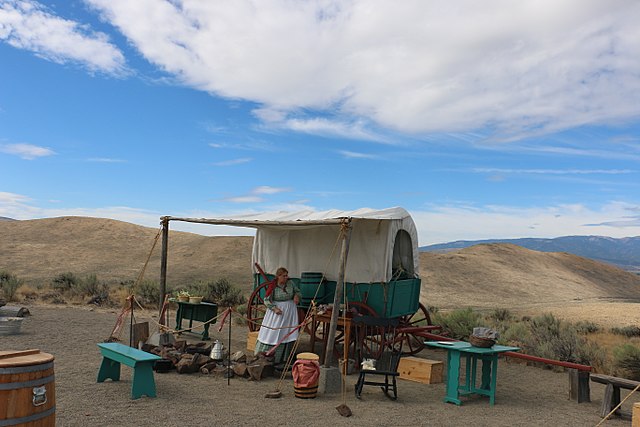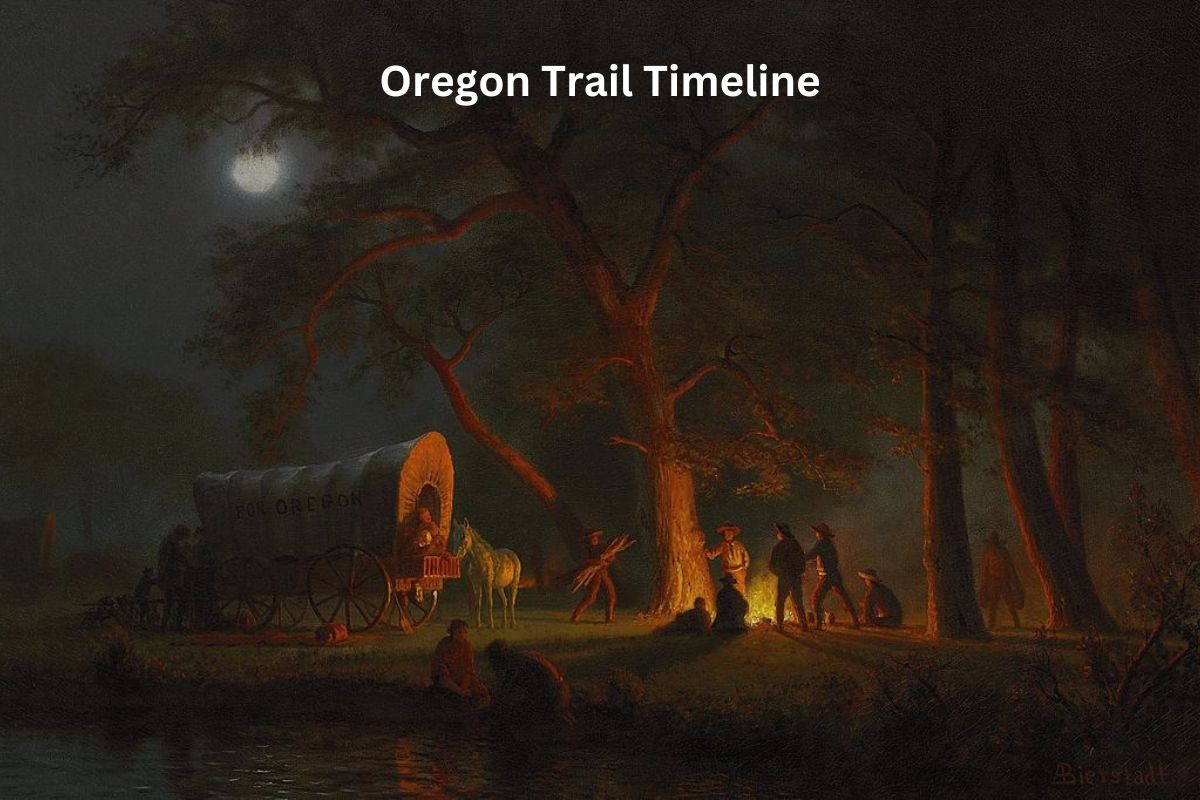The Oregon Trail, an iconic pathway in American history, served as a vital corridor for westward migration during the 19th century.
This historic trail spanned from Missouri to the Pacific Northwest, attracting pioneers, settlers, and adventurers seeking new opportunities, fertile lands, and a chance at a better life.
Along its rugged and perilous path, the Oregon Trail witnessed the triumphs and tribulations of those who braved its challenges, contributing to the rich tapestry of American westward expansion.
In this exploration, we delve into the key events and milestones that define the legacy of the Oregon Trail.
| Year | Event |
|---|---|
| Early 1800s | Fur Trappers and Explorers |
| 1811 | Wilson Price Hunt’s Expedition |
| 1812 | Robert Stuart’s Return |
| 1830s | Fur Traders and Missionaries |
| 1836 | The Whitman Mission |
| 1841 | The Bartleson-Bidwell Party |
| 1843 | The “Great Migration” or “Wagon Train of 1843” |
| 1846 | The Oregon Trail Becomes Heavily Used |
| 1846-1848 | The Mexican-American War |
| 1848 | The Oregon Territory |
| 1849 | The California Gold Rush |
| 1850s | Continued Use of the Trail |
| 1860s | Decline in Use |
| 1978 | The Oregon Trail Game |
Timeline of the Oregon Trail
Early 1800s: Fur Trappers and Explorers
In the early 1800s, the western regions of North America were largely uncharted and unknown to Euro-American settlers. This period saw the emergence of fur trappers and explorers who ventured into the wilderness to discover new lands and exploit the lucrative fur trade.
One of the most famous early exploratory expeditions was the Lewis and Clark Expedition, led by Meriwether Lewis and William Clark, which took place from 1804 to 1806.
Their journey was instrumental in mapping and documenting the vast terrain west of the Mississippi River and paved the way for future exploration and settlement.

1811: Wilson Price Hunt’s Expedition
In 1811, a significant expedition led by Wilson Price Hunt embarked on a journey westward in search of a practical overland route to the Pacific Ocean.
This expedition was part of the larger efforts by fur trading companies to establish trade networks in the western territories. Hunt’s party faced numerous challenges, including harsh terrain, encounters with Native American tribes, and scarcity of resources.
However, their journey ultimately proved successful when they reached the Columbia River in 1812, demonstrating the feasibility of an overland route to the Pacific Northwest.
1812: Robert Stuart’s Return
Robert Stuart and his group of trappers and explorers are notable for their successful return journey in 1812. After reaching the Pacific Northwest with Wilson Price Hunt’s expedition, Stuart and his party decided to return to St. Louis, Missouri, via a different route.
They traveled eastward along the Columbia and Snake Rivers, crossed the Continental Divide, and eventually made their way back to Missouri.
This return journey helped confirm the existence of an overland route that could be used for trade and settlement, and it contributed to the growing interest in the Oregon Trail as a migration route for settlers in the years to come.
1830s: Fur Traders and Missionaries
The 1830s saw an increase in fur trappers and missionaries venturing into the western territories. Fur trading companies, such as the Hudson’s Bay Company and the North West Company, established posts in the Pacific Northwest, leading to more interactions between Euro-American settlers and Native American tribes in the region. These fur trading outposts served as early centers of European influence and trade in the area.
Missionaries also played a significant role during this period. Notable figures like Marcus Whitman and Jason Lee established missions in the Oregon Country, with the Whitman Mission being founded in 1836 near present-day Walla Walla, Washington.
These missionaries aimed to convert Native American populations to Christianity while also facilitating cultural exchange and interactions between settlers and indigenous people.

1836: The Whitman Mission
Dr. Marcus Whitman and his wife, Narcissa Whitman, were prominent figures in the early settlement of the Oregon Country.
They established the Whitman Mission in 1836, with the goal of providing medical care and religious instruction to the Cayuse and Nez Perce Native American tribes. The mission also served as a stopover for travelers along the Oregon Trail, providing a place to rest and resupply.
The Whitman Mission became an important symbol of Euro-American presence in the region, but it also faced challenges. In 1847, tensions between the Whitmans and the Cayuse people escalated, resulting in the Whitman Massacre, where Marcus and Narcissa Whitman and several others were killed. This event added to the complex history of interactions between settlers and Native Americans in the Pacific Northwest.
1841: The Bartleson-Bidwell Party
The Bartleson-Bidwell Party is often recognized as the first emigrant wagon train to attempt the journey along what would become the Oregon Trail.
In 1841, this group of around 69 individuals, led by John Bidwell and John Bartleson, set out from Missouri with the intention of reaching California. However, their journey was fraught with challenges, as they lacked adequate supplies and navigational knowledge for the treacherous route.
The Bartleson-Bidwell Party’s experience highlighted the difficulties faced by early pioneers, and their journey served as a lesson for future emigrants.
While they ultimately did not reach their intended destination of California, their efforts marked a significant step in the westward expansion of the United States and the development of overland routes like the Oregon Trail.
1843: The “Great Migration” or “Wagon Train of 1843”
The year 1843 is often referred to as the “Great Migration” or the “Wagon Train of 1843” because it witnessed a significant increase in the number of emigrants traveling along the Oregon Trail.
Approximately 1,000 pioneers, including men, women, and children, embarked on this arduous journey to the Pacific Northwest. This mass migration was a response to the lure of fertile lands, economic opportunities, and the promise of a better life in the Oregon Country.
The leaders of this migration included pioneers like John Gantt and Lansford W. Hastings, who played crucial roles in organizing and guiding the wagon trains. The success of this migration further popularized the Oregon Trail as a viable route for westward expansion.

1846: The Oregon Trail Becomes Heavily Used
In the mid-1840s, the Oregon Trail became heavily used as a route for westward migration. Thousands of pioneers embarked on the journey, seeking a new life in the fertile valleys of the Pacific Northwest.
This influx of settlers was driven by a variety of factors, including the lure of free land offered by the U.S. government through the Donation Land Claim Act of 1850.
The trail was marked by numerous challenges, including treacherous river crossings, rough terrain, harsh weather, disease, and encounters with Native American tribes. Pioneers had to navigate these obstacles as they journeyed to Oregon’s Willamette Valley.
1846-1848: The Mexican-American War
The Mexican-American War, which took place from 1846 to 1848, had an impact on the Oregon Trail and westward migration.
During this period, the U.S. military was actively engaged in the conflict, and troops and supplies were transported through the western territories, often using parts of the Oregon Trail. This disrupted travel and occasionally led to conflicts between military personnel and civilian emigrants.
The end of the war in 1848 with the signing of the Treaty of Guadalupe Hidalgo resulted in the acquisition of a significant portion of the American Southwest, including California, and further expanded the territory of the United States.
This contributed to the diversification of routes taken by settlers, as some now opted for the California Trail to seek gold and opportunities in the newly acquired territories.
1848: The Oregon Territory
The Oregon Trail became closely associated with the Oregon Territory when the United States formally established the territory on August 14, 1848, through the Oregon Treaty with Great Britain.
The treaty set the border between the United States and British North America (Canada) at the 49th parallel, giving the United States control over the Oregon Country.
This formal recognition of the Oregon Territory increased interest in settling the region. The Donation Land Claim Act of 1850 offered 320 acres of land to married couples and 160 acres to single settlers who cultivated the land for four years, encouraging further migration along the Oregon Trail.
1849: The California Gold Rush
In 1849, the discovery of gold at Sutter’s Mill in California triggered the famous California Gold Rush. This event had a significant impact on the Oregon Trail and westward migration. The promise of quick riches drew a large number of emigrants away from the Oregon Trail to California’s goldfields.
Thousands of fortune seekers from around the world flocked to California, with many using the California Trail, an offshoot of the Oregon Trail, to reach the goldfields. This diversion of settlers had an economic impact on Oregon, as it led to a temporary decline in Oregon Trail traffic and a surge in the growth of California.
1850s: Continued Use of the Trail
Despite the allure of the California Gold Rush, the Oregon Trail continued to see a steady stream of pioneers and settlers throughout the 1850s. Many families sought the fertile farmlands and temperate climate of Oregon’s Willamette Valley.
Additionally, the Oregon Trail remained a primary route for those who chose to settle in the Oregon Territory.
The 1850s marked a period of more established communities and infrastructure along the trail, with the construction of trading posts, stagecoach stations, and waystations to support travelers. This helped ease some of the hardships of the journey.
1860s: Decline in Use
The 1860s witnessed a decline in the use of the Oregon Trail for westward migration. This decline was due in part to the completion of the First Transcontinental Railroad in 1869, which provided a faster and more convenient means of travel across the continent. The railroad made the arduous journey along the trail less necessary and less appealing to prospective settlers.
With the advent of the railroad, the Oregon Trail gradually faded from prominence as a primary route for westward expansion. While it had played a pivotal role in the settlement of the American West, it now belonged to the annals of history, its legacy forever etched in the story of America’s westward movement.
1978: The Oregon Trail Game
In 1978, an educational computer game called “The Oregon Trail” was created by Don Rawitsch, Bill Heinemann, and Paul Dillenberger. Initially text-based and later evolving into graphical versions, the game became iconic.
It educated players about the historical Oregon Trail journey while providing an engaging experience. Players made decisions as pioneer families, dealing with challenges like disease and river crossings.
The game blended history, geography, and resource management, serving as a valuable educational tool. Over the years, it evolved and remained popular, leaving a lasting cultural impact and nostalgic memories for those who played it.
